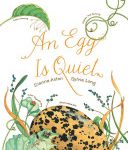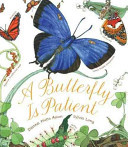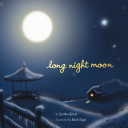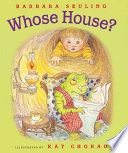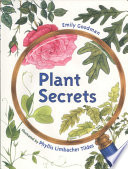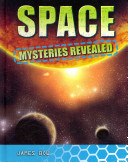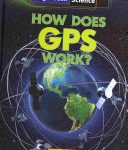Listed below are selected teacher resources, picture books, and non-fiction related to or demonstrating expository texts and writing.
Teacher Resources
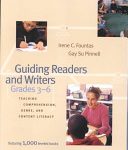 Guiding readers and writers, grades 3-6: Teaching Comprehension, Genre, and Content Literacy
Guiding readers and writers, grades 3-6: Teaching Comprehension, Genre, and Content Literacy
by Irene C. Fountas and Gay Su Pinnell
Grades: 3-6
The authors explore six essential components of a literacy program: breakthrough to literacy, independent reading, guided reading, literature study, teaching for comprehension and word analysis, and the reading and writing connection.
 Genre study: teaching with fiction and non-fiction books, grades K-8+
Genre study: teaching with fiction and non-fiction books, grades K-8+
by Irene C. Fountas and Gay Su Pinnell
Grades: K-8
This book uses an inquiry approach to engage students in exploring texts so that they can notice and name the characteristics of each genre and construct a working definition that guides their thinking of reading and writing.
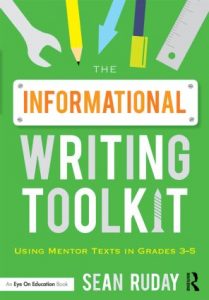 The informational writing toolkit: Using mentor texts in grades 3-5
The informational writing toolkit: Using mentor texts in grades 3-5
by Sean Ruday
Grades: 3-5
The author demonstrates how to help students analyze the qualities of effective informational texts using mentor texts, and then help students think of those qualities as tools to improve their own writing. The book covers all aspects of informational writing, including introducing and developing a topic; grouping related information together; adding features that aid comprehension; linking ideas; and using precise language and domain-specific vocabulary. (E-book only)
 Nonfiction mentor texts: Teaching informational writing through children’s literature, K-8
Nonfiction mentor texts: Teaching informational writing through children’s literature, K-8
by Lynne R. Dorfman and Rose Cappelli
Grades: K-8
The authors identifying a wide range of mentor texts and show how these models illustrate the key features of good writing.The book guides teachers through a variety of projects, samples, and classroom anecdotes that demonstrate how teachers can help students become more effective writers of good nonfiction.
 Stimulating non-fiction writing!: Inspiring children aged 7-11
Stimulating non-fiction writing!: Inspiring children aged 7-11
by Emma Hughes-Evans and Simon Brownhill
Grades: 2-6
This book offers ways to engage children in non-fiction writing, giving teachers the confidence and practical advice that they need to support children in producing quality non-fiction texts in the classroom. Types of texts explored include instructions, persuasive texts, reports, and correspondence. (E-book only)
 Nonfiction writing power: Teaching information writing with intent and purpose
Nonfiction writing power: Teaching information writing with intent and purpose
by Adrienne Gear
Grades: K-6
This book is designed to help teachers develop a writing program that will enable their students to harness all of their nonfiction writing powers: to describe, to instruct, to compare, to persuade, to explain, and to report. It illustrates ways to encourage students to write because they have something to say, and to recognize that writing well means considering intent and purpose, and choosing the best form of expression.
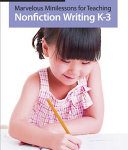 Marvelous minilessons for teaching: Nonfiction writing K-3
Marvelous minilessons for teaching: Nonfiction writing K-3
by Lori Jamison Rog
Grades: K-3
This book shows that even the youngest writers can consider audience and purpose as they use nonfiction writing to document their ideas and share those ideas with others. Forty minilessons offer strategies for writing informational, persuasive and procedural text. Each lesson starts with a learning goal and follows an “I do, We do, You do” format.
 Learning to write with purpose: Effective instruction in grades 4-8
Learning to write with purpose: Effective instruction in grades 4-8
by Karen Kuelthau Allan et al.
Grades: 4-8
Communicating ideas and information is what makes writing meaningful, yet many students write without considering the aims of their writing or the needs of their readers. This book shares techniques to promote the skills and strategies need to write and revise effectively in a range of genres, including persuasive, expository and procedural writing; narratives; and poetry.
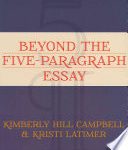 Beyond the five-paragraph essay
Beyond the five-paragraph essay
by Kimberley Hill Campbell and Kristi Latimer
Grades: 9-12
The authors demonstrate how to create a program that encourages thoughtful writing in response to literature. They provide numerous strategies that stimulate student thinking, value unique insight, and encourage lively, personal writing, including close reading, low-stakes writing options, a focus on process, and the use of model texts.
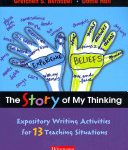 The story of my thinking: Expository writing activities for 13 teaching situations
The story of my thinking: Expository writing activities for 13 teaching situations
by Gretchen S. Bernabei and Dorothy P. Hall
Grades: 7-12
The authors offer options for teaching expository writing that more realistically match the way readers actually think and writers actually write. Their goal is to help teachers take their students through the various stages of the writing process – from generating ideas to publication – in a way that helps them produce vibrant nonfiction with voice and conviction.
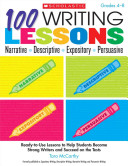 100 writing lessons: Narrative, descriptive, expository, persuasive
100 writing lessons: Narrative, descriptive, expository, persuasive
by Tara McCarthy
Grades: 4-8
This collection of quick writing lessons and activities will help teachers to find exactly what they need for teaching writing, whether it’s a lesson on using exact words, writing an essay, developing a plot, or organizing a report. The author shares dozens of ideas for teaching students the persuasive, narrative, descriptive, and expository writing skills they need.
Picture Books Demonstrating Expository Writing
written by Diana Hutts Aston, illustrated by Sylvia Long
From tiny hummingbird eggs to giant ostrich eggs, oval ladybug eggs to tubular dogfish eggs, gooey frog eggs to fossilized dinosaur eggs, this book demonstrates the incredible variety of eggs and celebrates their beauty and wonder.
written by Diana Hutts Aston, illustrated by Sylvia Long
From the world’s tiniest butterfly (Western Pygmy Blue) to the largest (Queen Alexandra’s Birdwing), and throughout their complex life cycle, an incredible variety of butterflies are shown and described here in all of their magnificence.
written by Cynthia Rylant, illustrated by Mark Siegel
The 12 full moons throughout the year are given names inspired by Indigenous American traditions, each reflecting the time of year and the seasons in which they are seen.
written by Barbara Seuling, illustrated by Kay Chorao
A young boy explores the homes of many different animals before deciding that his own house is the best home for him.
written by Emily Goodman, illustrated by Phyllis Limbacher Tildes
Plants come in all shapes and sizes, but they go through the same stages as they grow. Using four common plants, young readers learn about a plant’s life cycles: from seed to plant to flower to fruit and back again.
Fiction showing Expository Writing
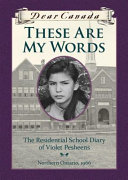 These are my words: The residential school diary of Violet Pesheens
These are my words: The residential school diary of Violet Pesheens
by Ruby Slipperjack
Violet is struggling to adjust to her new life at residential school. She misses her Grandma; she has run-ins with Cree girls; at her “white” school, everyone just stares; and everything she brought has been taken from her, including her name-she is now just a number. But worst of all, she has a fear. A fear of forgetting the things she treasures most, and a fear of forgetting who she was. Her notebook is the one place she can record all of her worries, and heartbreaks, and memories. (Also available in French.)
Non-Fiction Related to or Demonstrating Expository Writing
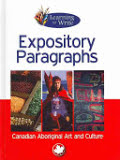 Expository paragraphs: Canadian Aboriginal art and culture,
Expository paragraphs: Canadian Aboriginal art and culture,
by Frances Purslow
Grades: 3-7
For more books in the “Learning to Write” series, click here.
by James Bow
Grades: 3-6
This book explores and begins to explain many space-related questions, like “How did the universe all begin and where might it end?”, “Will we ever travel in time?”, “What would happen if you were sucked into a black hole?”, and “How can you drive on the Moon?” Part of the Mysteries revealed series.
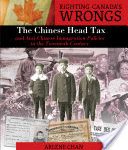 The Chinese head tax and anti-Chinese immigration policies in the twentieth century
The Chinese head tax and anti-Chinese immigration policies in the twentieth century
by Arlene Chan
Grades: 6-12
Through historical photographs, documents, and first-person narratives from Chinese Canadians who experienced the Head Tax or who were children of Head Tax payers, this book offers a full account of the injustice of this period in Canadian history. Part of the Righting Canada’s wrongs series.
by Leon Gray
Grades: 4-6
When taking a road trip today, some sort of GPS device is essential. It may be built into the car’s dashboard, or perhaps it’s just an app on a smartphone. But GPS is used for more than just finding your way! Readers will be fascinated by its many uses, such as catching criminals, predicting earthquakes, and creating maps.
by Liz Prince
Grades: 7-12
A memoir told anecdotally, Tomboy follows author and zine artist Liz Prince through her early childhood into adulthood and explores her ever-evolving struggles and wishes regarding what it means to “be a girl.” It’s about refusing gender boundaries, yet unwittingly embracing gender stereotypes at the same time, and realizing later in life that you can be just as much of a girl in jeans and a T-shirt as you can in a pink tutu.
 Speaking our truth: a journey of reconciliation
Speaking our truth: a journey of reconciliation
by Monique Gray Smith
Grades: 4-8
Guided by acclaimed Indigenous author Monique Gray Smith, readers will learn about the lives of residential school survivors and listen to allies who are putting the findings of the Truth and Reconciliation Commission into action. (Teacher’s guide also available.)
Finding More Resources
To find more resources in this area, try the following:
- Search using the General tab on the UBC Library website to look for material in all UBC Library branches.
- Search using “Search Education Resources” box in the left hand bar on the Education Library website to limit your results to materials in the Education Library.
- Use specific search terms to narrow your results, such as “expository texts”, “English language – composition and exercises”, “exposition (rhetoric) – study and teaching”, “report writing – study and teaching”, or “composition (language arts)”.
- To find lesson plans, include “lesson plans”, “lesson planning”, or “activity programs” in your search terms.
For more help with searching, please visit the Library Service Desk or e-mail ed.lib@ubc.ca.
